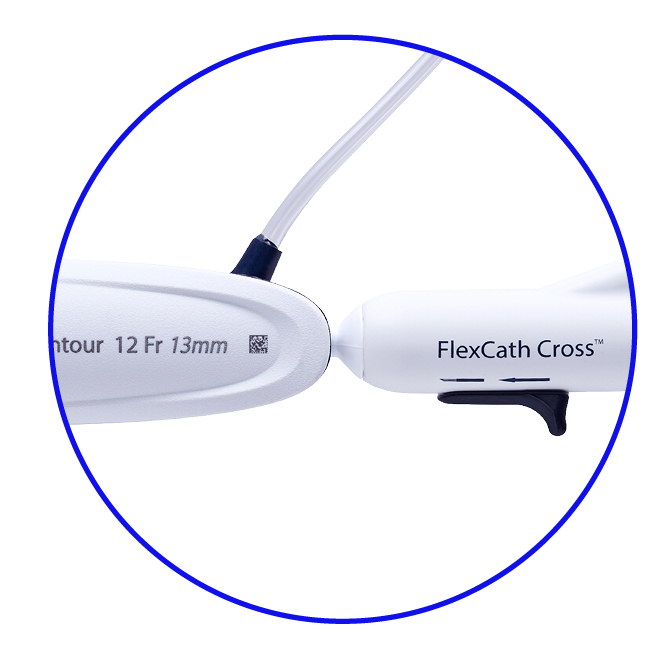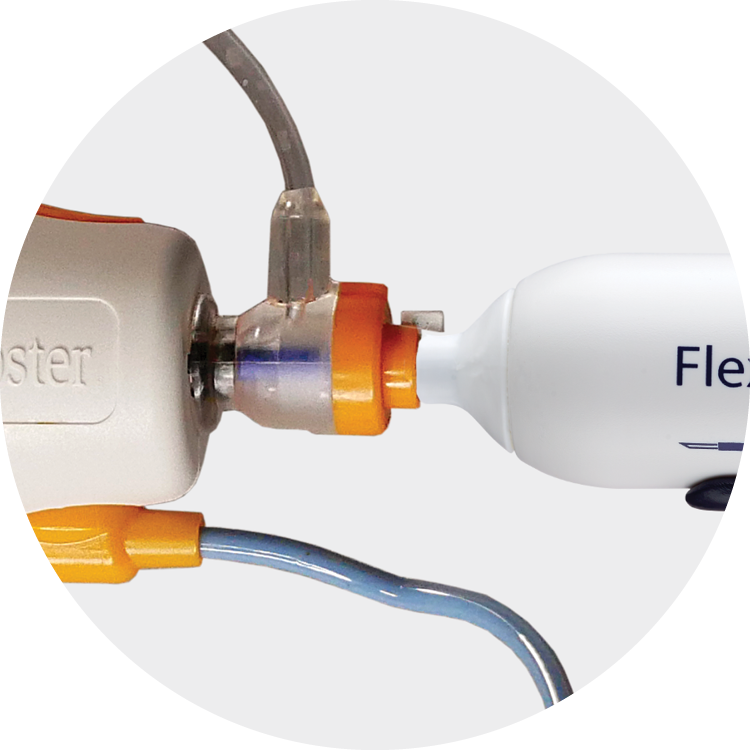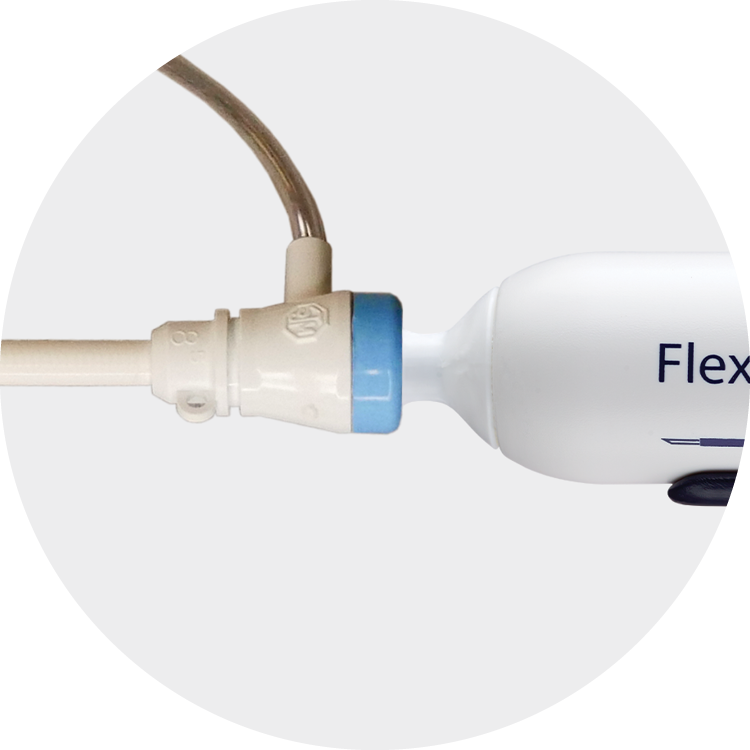| Item number | Description | Compatible sheath |
|---|---|---|
| 900300 | FlexCath Cross™ — AG 61 cm | Agilis™* NxT — 61 cm |
| 900301 | FlexCath Cross™ — AG 71 cm | Agilis™* NxT — 71 cm |
| 900302 | FlexCath Cross™ — SL 63 cm | Swartz™* SL1 — 63 cm |
| 900309 | FlexCath Cross™ — SL 81 cm | Swartz™* SL1 — 81 cm |
| 900303 | FlexCath Cross™ — VZ 71 cm | CARTO VIZIGO™* — 71 cm |
| 900304 | FlexCath Cross™ — FC 65 cm | FlexCath Advance™ — 65 cm |
| 900306 | FlexCath Cross™ — MH 63 cm | Merit Medical HeartSpan™* sheath — 63 cm |
| 900307 | FlexCath Cross™ — MH 81 cm | Merit Medical HeartSpan™* sheath — 81 cm |
| 900308 | FlexCath Cross™ — WT 75 cm | Watchman™* TruSeal™* and FXD™* access systems — 75 cm |
| 012852 | FlexCath Cross™ with mini sheath — 65 cm | 65 cm, 90 degrees, 8.5 Fr ID, 11 Fr OD |
| 900310 | FlexCath Cross™ — FCC 65 cm, 10 Fr | FlexCath Contour™ — 65 cm, 10 Fr |
| 900311 | FlexCath Cross™ — FCC 65 cm, 12 Fr | FlexCath Contour™ — 65 cm, 12 Fr |
Introducer sheaths and needles
FlexCath Cross™ transseptal solution
Introducer sheaths and needles
FlexCath Cross™ transseptal solution
The FlexCath Cross™ transseptal solution pairs with commercially available sheaths for both mechanical and radiofrequency (RF) crossing.
Description
The first and only transseptal access system specifically engineered to pair with commercially available sheaths, including the Medtronic FlexCath Contour™ steerable sheath.
The FlexCath Cross™ system enables a zero exchange transseptal workflow, which adds efficiencies and simplifies left atrial access procedures. FlexCath Cross™ is the only transseptal access system on the market cleared for both mechanical and RF crossing.
Features
Zero exchange workflow
The integrated needle/dilator design removes the need for needle, guidewire, transseptal, and therapeutic sheath exchanges. The FlexCath Cross™ system helps reduce procedural time of transseptal access by up to 49.9% on average in comparison to traditional mechanical solutions.1,2
Zero sheath exchanges
Dilators compatible with leading industry sheaths eliminate the need for separate transseptal and therapeutic sheaths.
49.9%
average reduction in time
for transseptal access1,2
Versatility for your procedures
Choose the FlexCath Cross™ model that fits with your existing sheath preferences for transseptal access. FlexCath Cross™ is compatible with the following industry-leading introducers and with both mechanical and radiofrequency (RF) crossing.

Cross with control
The FlexCath Cross™ needle only deploys when activated, designed for ease of control during transseptal puncture.


- Guidewire
- Conforms to any sheath curve
- Integrated needle (advances 4 mm)
- Dilator shaft
- EGM or RF energy connector
- Needle slide button
- Luer fitting guidewire lumen
Competitive comparison
| Feature | FlexCath Cross™ | BRK™*3 | SafeSept™*4 | NRG™5 | VersaCross™*6 |
|---|---|---|---|---|---|
| Integrated guidewire design reduces exchanges | ◾ | x | x | x | ◾ |
| Indicated for use mechanically or with RF | ◾ | x | x | x | x |
| Reposition without requiring wire/needle exchange | ◾ | x | x | x | ◾ |
| Engineered to pair with leading sheaths | ◾ | x | x | x | x |
Ordering information
Resources
Related products
TM* Third-party brands are trademarks of their respective owners.
- Rizzi S, Pannone L, Monaco C, et al. First experience with a transseptal puncture using a novel transseptal crossing device with integrated dilator and needle. J Interv Card Electrophysiol. 2022;65(3):731–737.
- Yong Ji S. Use of the novel AcQCross transseptal system improves procedural efficiency compared to conventional transseptal puncture technique. Presented at AF Symposium; 2022.













